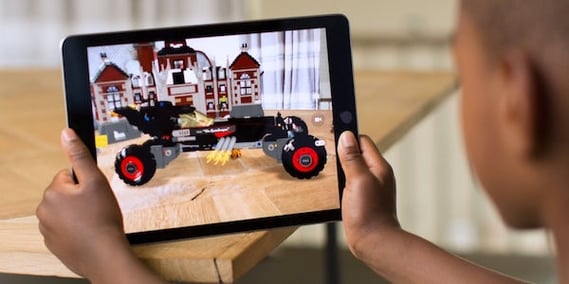
Will Apple's rollout of Augmented Reality technology to 100s of millions of devices in the forthcoming iOS 11 provide the accelerant that the AR market needs?
Even some of its most ardent proponents would have to admit that Virtual and Augmented Reality have not yet had the success in the market that was predicted as recently as this time last year. Indeed, a recently published B2B survey from ABI Research on AR concluded that interest is high, but adoption remains low.
“In a recent B2B technology survey of 455 U.S.-based companies across nine vertical markets, ABI Research finds that only 25% of respondents actively operate AR technology; yet, 75% of respondents show varying levels of interest in future implementations,” the company wrote.
The hint about the fairly near future is really interesting, as ABI sees the next years as being highly significant for the field.
"Early adopter and pilot phases are ongoing,” writes Eric Abbruzzese, Principal Analyst at ABI Research. “While these implementations are beginning to scale, they are still small. True AR scale will be seen in the next one to two years, with a greater foundation for growth in enterprise and compelling consumer products coming to market."
Apple gives AR a boost
This viewpoint is that we are on the cusp of something rather big with AR. Apple has given AR a real world boost with the announcement of an AR App Development Kit, the ARKit, at its recent Worldwide Developers Conference.
This is part of the iOS11 update, whose adoption of HEVC we’ve covered here.
ARKit combines two technologies:
Visual Inertial Odometry: essentially tracking, as the broadcast industry is used to calling it
CoreMotion data: reported from a devices’s onboard hardware mix of accelerometers, gyroscopes, magnetometers and more.
This allows a device to know where it is in relation to the world. The software then automatically analyses the scene to detect horizontal planes such as tables and floors, as well as using the camera sensor to measure the lighting in a scene. And all this allows it to place an object convincingly in that world.
Of course, all this takes power, and ARKit will only run on devices equipped with Apple’s A9 and A10 processors; in other words from the iPhone 6S and 2017 iPads onwards. So, while Apple has an installed base of over one billion iPhones and 360 million iPads, it’s only the very latest devices that will be able to run the AR routines, though the company still talks about that being ‘hundreds of millions of iOS devices’. Certainly, it will be available on more than Google’s Tango AR platform, which is still only available on a limited number of Android devices.
And all that power leads to something a bit more refined than Pokemon Go. The following demo was shot live at WWDC and shows what Sir Peter Jackson’s Wingnut AR games development company can get up to when it incorporates the Unreal Engine into the mix.
You can see the full presentation unveiling ARKit and dive into all the detailed technical detail here (Safari only for various annoying codec reasons). Scenarios highlighted in the demos range from games and placing Minecraft blocks into real world environments, through virtual measuring, design (Ikea is working on an app) and more. Well-founded rumors note that the iPhone 8 might include some form of automatic 3D depth perception, based upon its purchase of PrimeSense, the Israeli film that initially developed much of the tech in the Microsoft Kinect controller.
Smartphones – the spark for widespread AR adoption
We’ve covered the subject of the smartphone being the catalyst that will ignite the AR market before (see Augmented Reality Technology and the Challenges Ahead) and it’s worth repeating a paragraph from that.
"Digi-Capital’s contention is that if Tango and Tango-like technologies can be built into the next gen of smartphones, then that takes AR into the world of the high-volume, rapid replacement cycle that is the province of the smartphone. This means the technology can go mass market in the space of a single, popular app.”
We’re now talking about high-quality AR implementations - not on Microsoft Hololens, not on Magic Leap, but on devices in the pockets of millions of people around the world in the here and now. And with that being the case then yes, we really could be on the verge of true AR scale.


